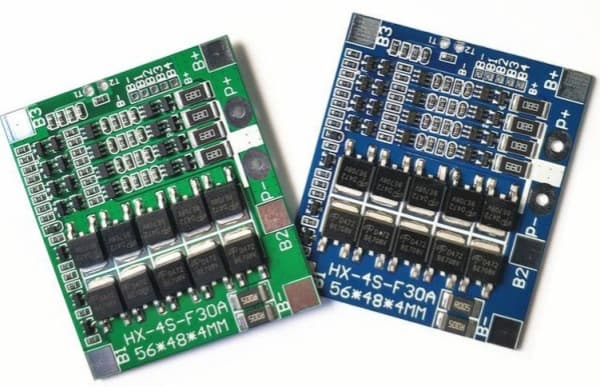In simple terms, PCB reverse engineering starts with scanning the circuit board to be
cloned, recording the detailed positions of all components. These components are then
removed and listed into a bill of materials (BOM) for procurement. The bare board is
scanned into images, which are then processed with reverse engineering software to
recreate the PCB layout file. This file is sent to a board manufacturer for fabrication.
Once the board is made, the purchased components are soldered back onto the new PCB,
followed by testing and debugging.

Once you have the PCB, first record all component models, parameters, and locations on
paper, especially paying attention to the orientation of diodes, transistors, and IC
notches. It’s best to take high-resolution photos of the component layout. Modern PCBs
often have tiny components that can be easily overlooked.
Remove all components from the board, and desolder the pads. Clean the PCB with alcohol,
then scan it at high resolution to obtain clear images. Lightly sand the top and bottom
layers with fine sandpaper until the copper shines. Then scan both sides again using
Photoshop in color mode. Ensure the board is placed flat and straight in the scanner for
usable images.
Adjust the contrast and brightness to clearly distinguish copper traces from non-copper
areas. Convert the image to black and white and save it as BMP files (TOP.BMP and
BOT.BMP). If necessary, use Photoshop to correct and repair any defects in the image.
Convert the BMP files into Protel format files. Load both layers into Protel. If the
pads and vias align correctly, the previous steps were successful. If there are
discrepancies, repeat step 3. Precision is crucial, as even small errors can affect the
final quality and compatibility.
Convert the TOP BMP to a Protel PCB file (TOP.PCB), placing the graphics in the SILK
layer (yellow). Trace the circuit in the TOP layer and place the components according to
your reference from step 2. Once completed, delete the SILK layer and repeat for other
layers until all are drawn.
Import both TOP.PCB and BOT.PCB into Protel and merge them into a single file.
Use a laser printer to print the top and bottom layers onto transparent films (at 1:1
scale). Overlay the films onto the original PCB to verify alignment. If everything
matches, you’ve successfully cloned the board. However, this is only half the job — you
still need to test the cloned board to verify that its electronic performance matches
the original.
Note: For multilayer boards, internal layers must also be sanded and
repeated through steps 3–5. File naming should correspond to each layer. Double-sided
boards are significantly easier to clone than multilayer ones, which are prone to
alignment issues. Special care is required to handle plated through holes (PTH) and
non-plated through holes (NPTH).
-
Scan both the top and bottom layers of the PCB and save them as BMP files.
-
Open QuickPCB 2005, click “File > Open Background Image” to load the top
scan. Use PAGEUP to zoom, PP to place a pad, PT to trace lines — it’s like a
digital “tracing” activity. Save the project as a .B2P file.
-
Load the bottom layer scan as a new background image.
-
Open the previously saved .B2P file. You’ll see the traced layout overlaid. Use
“Options > Layer Settings” to hide the top layer and silkscreen, leaving only
the vias.
-
Now align the vias on the bottom image and trace the bottom layout. Save the
.B2P again — it now includes both layers.
-
Export the file as a PCB layout. You can now modify, generate schematics, or
directly send it for manufacturing.
Cloning a 4-layer board involves repeating the process for two double-sided boards. A
6-layer board requires three, and so on. The real challenge with multilayer boards is
that internal traces are hidden.
To reveal the inner layers, layer separation is required. This can be done with
chemicals, mechanical peeling, or — most effectively and safely — with sandpaper.
After finishing the top and bottom layers, use sandpaper to gradually grind off the top
to expose the inner layers. Use regular sandpaper from a hardware store. Place the board
flat and rub evenly. Silkscreen and solder mask are easy to remove; copper traces need
more effort. Smaller boards take a few minutes, while complex ones like memory sticks
may take 10+ minutes. Strength and patience help here.
Grinding is currently the most widely used and economical method for inner layer
separation. Try it on a discarded PCB first — it’s not technically difficult, just
time-consuming and physical.
After laying out the system, review the PCB design for optimization. Key considerations:
-
Signal and Power Routing: Is the layout optimal and feasible
for routing? Are signal paths, power, and ground networks well planned?
-
Dimensional Accuracy: Are board dimensions accurate? Do they
meet manufacturing requirements and mechanical fitting, including connector
positions?
-
Component Clearance: Ensure no spatial conflicts in both 2D and
3D, especially component height. For wave-soldering, component height should
generally not exceed 3mm.
-
Component Density and Arrangement: Is the component layout
balanced and tidy? Are all components placed? Consider both signal flow and
spatial density.
-
Ease of Maintenance: Frequently replaced parts should be
accessible, and plug-in boards should be easily inserted and removed.
 Tue, 15 Jul 2025 08:52:08 GMT
PCBASAIL
Tue, 15 Jul 2025 08:52:08 GMT
PCBASAIL
 Tue, 15 Jul 2025 08:52:08 GMT
PCBASAIL
Tue, 15 Jul 2025 08:52:08 GMT
PCBASAIL